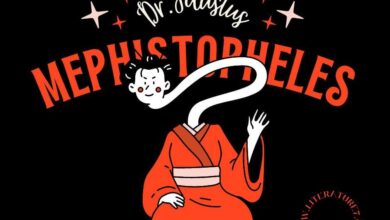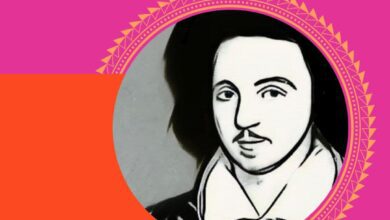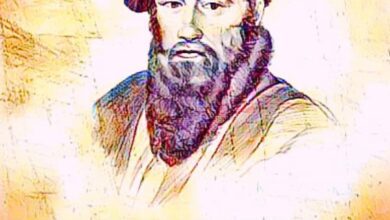Chaucer art of characterization in prologue to the canterbury tales

Chaucer has been a master of character representation in the past. His prologue is a gallery of portraits of characters. The largest portrait of Chaucer in the body of a tale is that of the Friar in the Somnour Tale. But the Pardoner and Bath’s Wife are in the poem, as a whole, Chaucer’s masterpieces of characterization. Both of them laid bare themselves. The Pardoner provides a cynical revelation. This is miserable in its realism and boldly pronounced.
The Bath’s wife is as amoral as Falstaff and Rabelaisian before Rabelais. She enjoys a taste and honesty, as her views on marriage and her successive marital exploits will reveal. Wife of Bath is the best of all. Chaucer enjoys her creation. There’s nothing else like her. Her self-revelation, her verve, and her racism are excellent.
The Pardoner is the one lost soul, as Professor Kittredge calls him. Without a single sharp moment of repulsion among the pilgrims. And his story is a sermon on avarice, a sermon filled with flagrant cynicism. This tale of covetousness and death concludes with death’s most haunting. Then, despite his confession, the Pardoner gives away his self-discredited selling forgiveness and his relics to kiss, impudently singing out the host. This is the most disgusting moment of the trip.
Read more Contribution of university wits in english literature
Chaucer Artistic Method
Chaucer is a great English literature character painter. The 30 pilgrims whose portraits were traced by Chaucer give us an excellent idea of the Canterbury Tales Prologue culture. He has painted the English countryside as a whole, excluding royalty and nobility, thieves, tramps, and outcasts. He leaves the highest and the lowest.
Characters Represent the Cross-section of the 14th Century English Society
The thirty pilgrims belong to various occupations, including the host. In the Knight and his son, gentle blood is seen. They reflect the aspect of war. The educated and liberal professions include the Man of Law, the doctor, the Oxford clergyman, and the poet. The merchant and the Shipman are from the higher business class. The Wife of Bath, Haberdasher, and his associates, an expert clothmaker, are in the class of London smaller merchants and manufacturers.
Read also Critical analysis of songs of innocence and experience
The Ploughman, the Miller, and the Franklin are on agriculture. The town and country are represented by the top servants such as Manciple and Reeve and by the bottom servants such as Yeoman and the Cook. The Monk of his monastery, the Prioress of his sanctuary, the priests accompanying her, the town Parson and the wandering Friar, the Pardoner and the Somnur are all religious.
Chaucer is a master of balancing between individual and typical characteristics in his character.
These portraits strike a balance between the individual and the character. They retain the characteristics of the one and the characteristics of the other. Chaucer had a proper rogue, John Hawley of Dartmouth, in his mind when he drew Shipman, but he ceases to be John Hawley during his portrait. Alone with one line, ‘His berd was shaken in many storms,’ Chaucer makes us recognize him in every era and climate of all times. The 30 characters are accurate to the form in which the whole of human existence is cast. Some of them still seem to live today. In every generation, the old Knight can be identified.
The Squire, a half-dandy, half-athlete, is every day the average young guy. The pomp of the merchant comes from the accumulation of wealth. The Man of Law collects charges and property. The merchant, with his forked beard, is dressed in ‘motteleye’ and sits atop his horse wearing a “Flaundryssh bevere hat.” His indifference shows his dedication to studying to ” robes riche.” Frankin’s beard is as white as daisy. He is the “Epicuras owene sone,” rolling comfortably.
Chaucer’s acute faculty of observation
Chaucer looks critically at his characters and carefully delineates each man and woman. He explains his characters here and there with bright detail. This gives the feeling that every detail is casual, economical, significant, and varied. These are examples of art that makes art. Chaucer is not pursuing any definite strategy. The prominent features of the dress also come first. The gypoun of the Knight is still distinguished by its armor of rust and oil. It’s factual facts, but we learn that during his pilgrimage, he wasted no time.
Related Chaucer’s portrayal of ecclesiastical characters in the prologue to the canterbury tales
Chaucer’s Power of vivid description
The system of Chaucer was unprecedented. For the first time, a writer depicted individuals and ideas. The characters are consistent and develop like real human beings. In their own words and deeds, they show themselves. Master Herry Bailly is the best example. His character is gradually exposed in a series of characteristics to us during his pilgrimage.
In The Canterbury Tales, Chaucer viewed social and religious circumstances in the fourteenth century. He portrays his characters realistically with a deep and lively interest in life and a keen observer power. The characters represent various occupations and depict the diverse aspect of life.
The most significant case of the 14th century was the Black Death, which visited England four times. One-half of the population had been killed, including two-thirds of the capital’s population. Chaucer sheds some light on medical science’s helplessness. There was none like his doctor around the world; he was a perfect practitioner. But his scientific knowledge was based on ‘astronomy.’ He cared more about money, and he received sufficient money during the pestilence.





